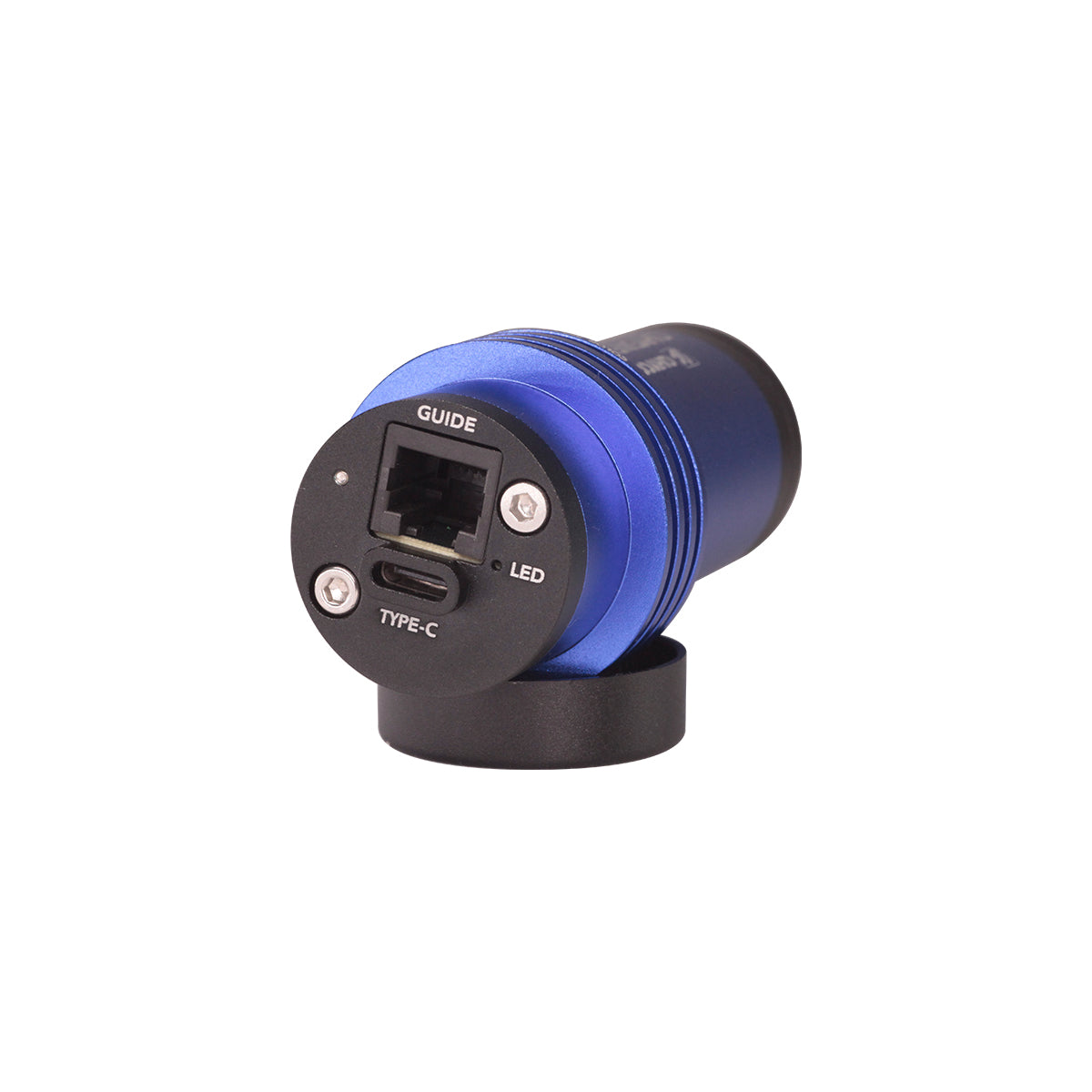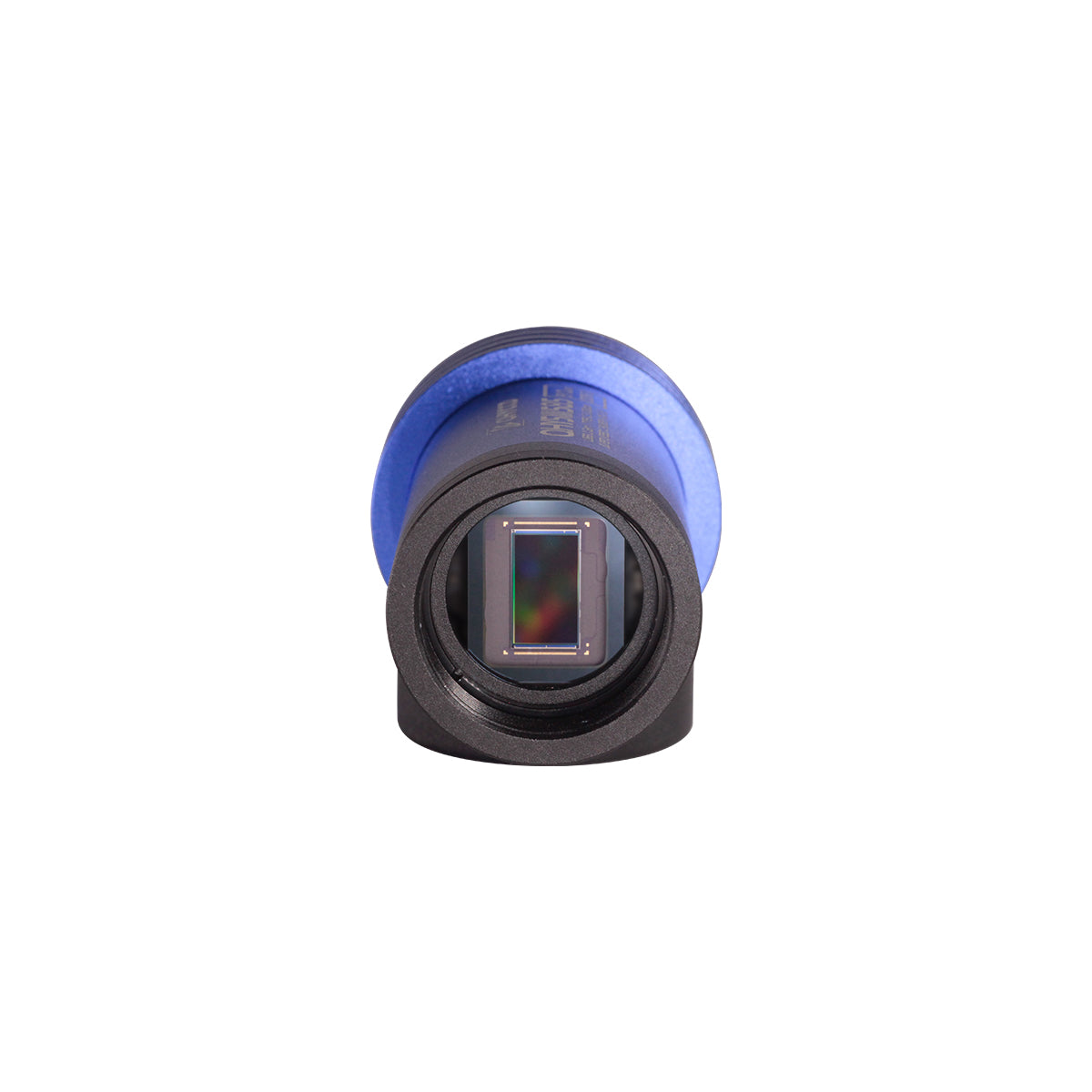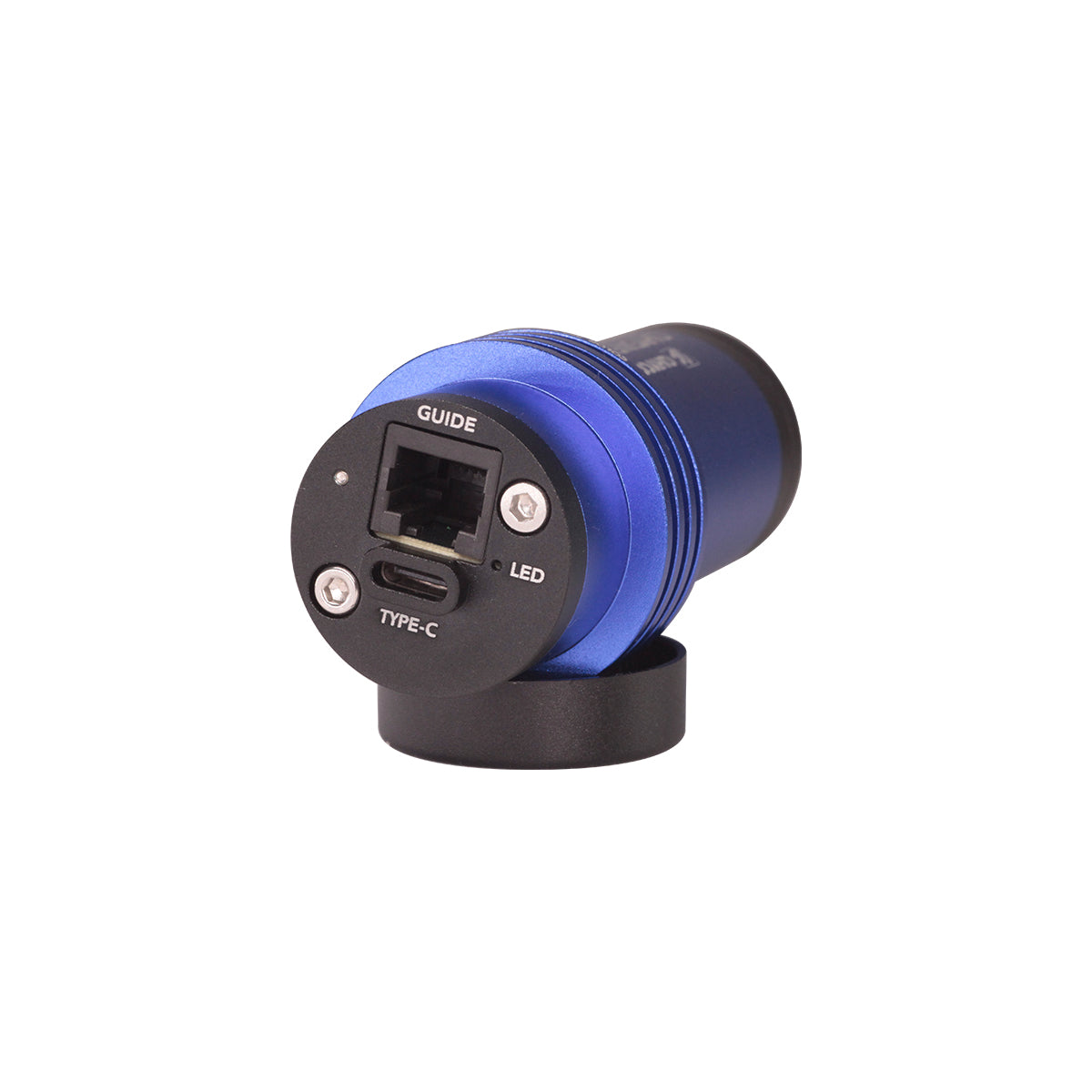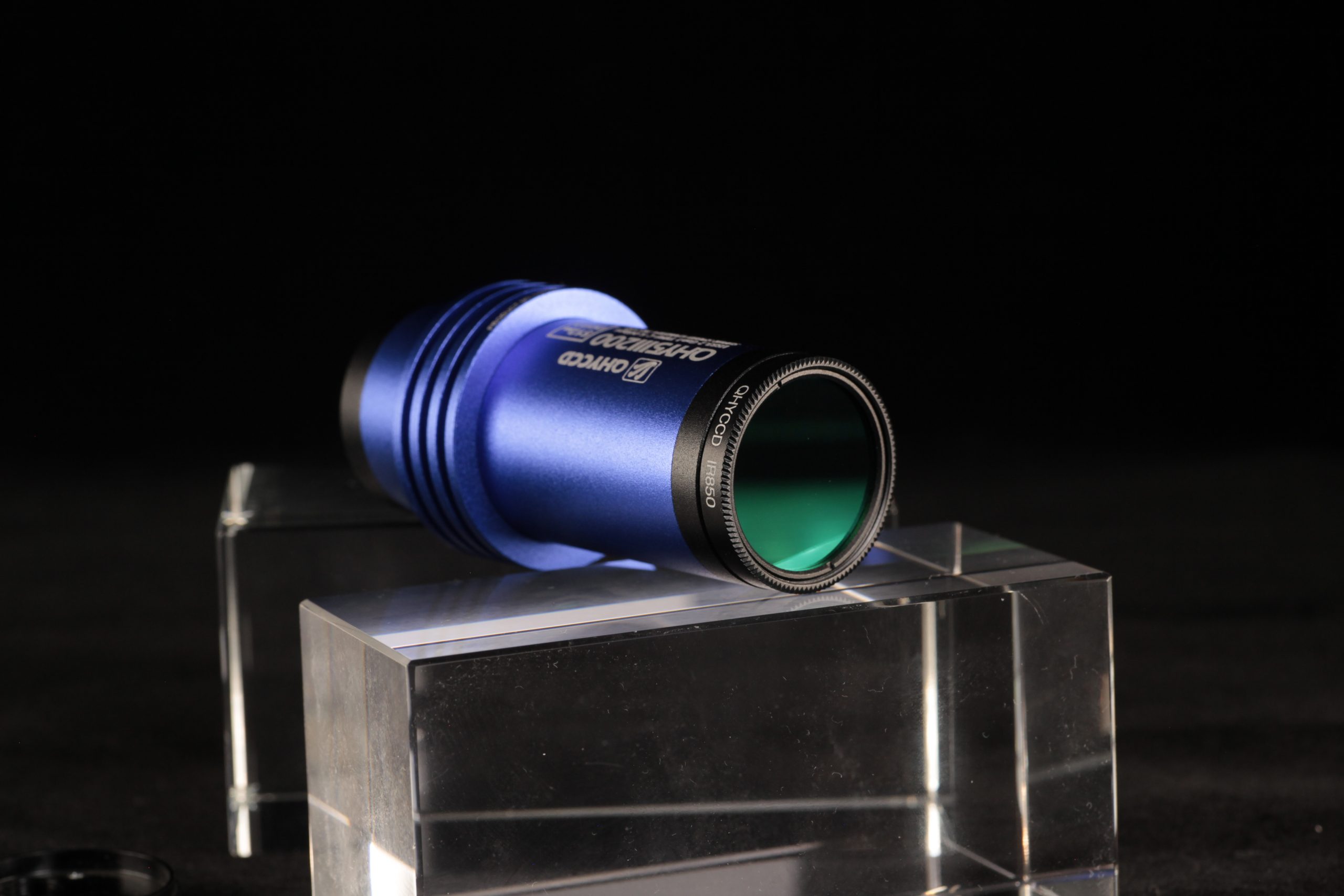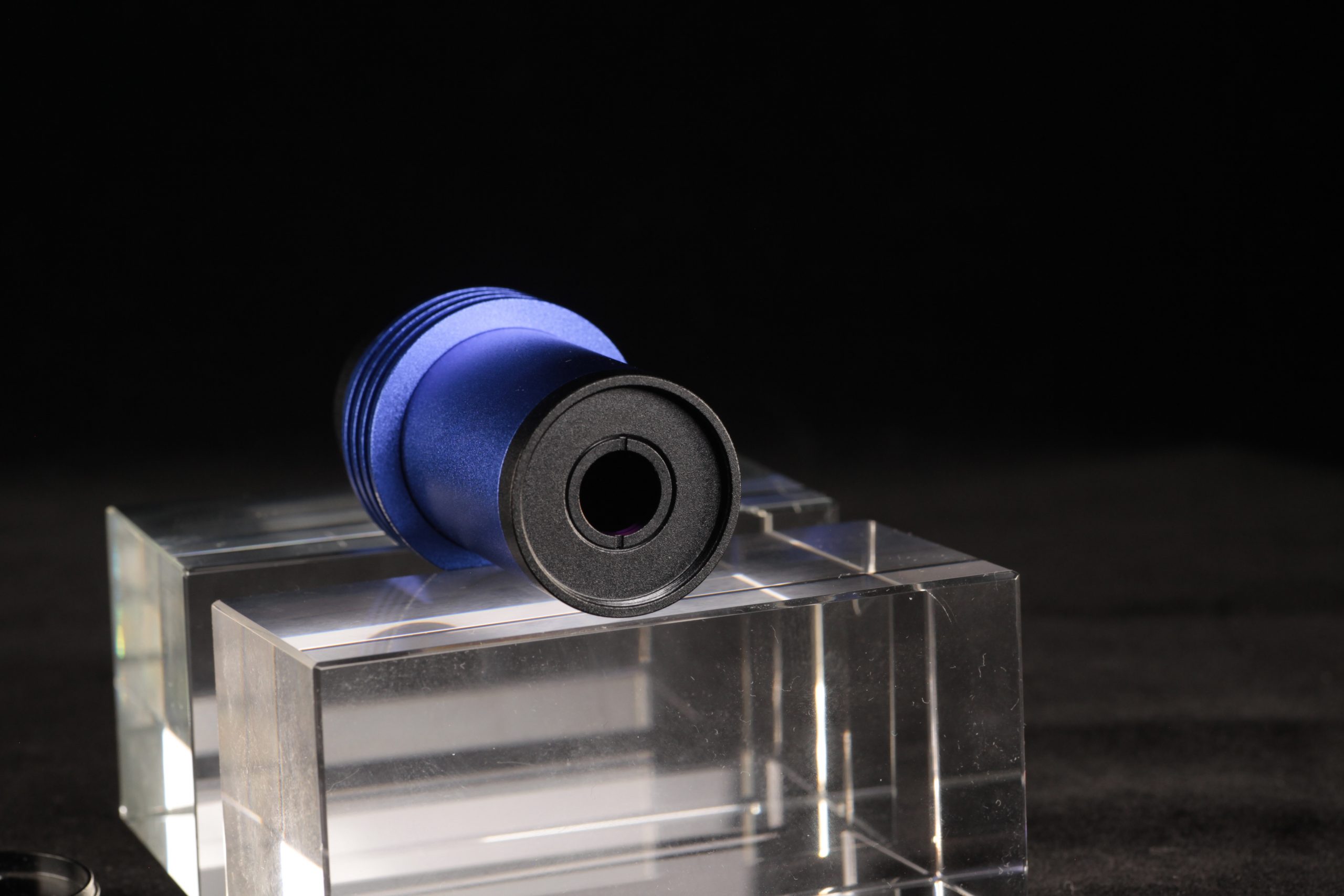QHY5III585M/C
QHY5III585M/C
Couldn't load pickup availability
The QHY5III585C is an enhanced version of the QHY5III485C, belonging to the QHY5III V2 series of planetary and guiding cameras. Let’s explore its features:
-
Sensor and Sensitivity:
- The QHY5III585C features a 1/1.2-inch large sensor with excellent characteristics of zero glow.
- It has a high sensitivity in the near-infrared (NIR), making it ideal for capturing celestial objects beyond the visible spectrum.
- The sensor’s dynamic range performance has been significantly improved compared to its predecessor1.
-
Sony IMX585 Sensor:
- The QHY5III585C utilizes the Sony IMX585 sensor, which is part of the Sony Starvis II processor family.
- This sensor enables high sensitivity and high dynamic range (HDR).
- It improves sensitivity in the near-infrared range by approximately 1.7 times compared to the IMX485 sensor1.
-
Large Full-Well Capacity:
- The QHY5III585C boasts a full-well capacity of over 30,000 electrons (approximately three times that of the previous generation QHY5III485C).
- This large capacity allows it to handle bright and faint objects effectively1.
-
512MB DDR3 Image Buffer:
- The camera is equipped with a 512MB DDR3 image buffer, reducing the pressure on computer transmission during planetary photography.
- This buffer is especially helpful when writing large amounts of data in a short period of time1.
-
New Front-End Design with Better Compatibility:
- The QHY5III585C (Ver. 2) features a new front-end design for improved compatibility.
- Its back focal length (BFL) is only 8mm, making it easy to use with off-axis guiders (OAGs).
- The camera supports various adapters, including 1.25-inch threads, CS and C-mount, and even filters.
- The USB 3.2 Gen1 Type-C interface ensures efficient data transfer1.
In summary, the QHY5III585C combines high sensitivity, improved dynamic range, and efficient memory handling, making it a valuable tool for planetary imaging and guiding in both visible and near-infrared wavelengths1. You can find more information about this camera on the QHYCCD website
 One benefit of the back-illuminated CMOS structure is improved sensitivity. In a typical front-illuminated sensor, photons from the target entering the photosensitive layer of the sensor must first pass through the metal wiring that is embedded just above the photosensitive layer. The wiring structure reflects some of the photons and reduces the efficiency of the sensor.
One benefit of the back-illuminated CMOS structure is improved sensitivity. In a typical front-illuminated sensor, photons from the target entering the photosensitive layer of the sensor must first pass through the metal wiring that is embedded just above the photosensitive layer. The wiring structure reflects some of the photons and reduces the efficiency of the sensor.
In the back- illuminated sensor the light is allowed to enter the photosensitive surface from the reverse side. In this case the sensor’s embedded wiring structure is below the photosensitive layer. As a result, more incoming photons strike the photosensitive layer and more electrons are generated and captured in the pixel well. This ratio of photon to electron production is called quantum efficiency. The higher the quantum efficiency the more efficient the sensor is at converting photons to electrons and hence the more sensitive the sensor is to capturing an image of something dim.
The IMX585 is a Sony Starvis II processor that enables high sensitivity and high dynamic range (HDR). It also improves sensitivity in the near-infrared range by approximately 1.7 times* compared to the IMX485. The new camera QHY5III585C has a large fullwell capacity of over 30ke-, approximately three times that of the previous generation QHY5III485C.
*This data is officially provided by Sony: https://www.sony-semicon.com/cn/news/2021/2021062901.html
The QHY5III (Ver. 2) series planetary and guiding cameras are all equipped with a 512MB DDR3 image buffer which can effectively reduce the pressure on computer transmission, a great help for planetary photography which often requires writing a large amount of data in a short period of time. Some deep-sky astrophotography cameras on the market today only have 256MB, for example.
In comparison, the 512MB DDR3 memory of the new 5III (Ver. 2) series cameras represents a significant upgrade.
QHY5III (Ver. 2) series cameras have adopted a new front-end design with better compatibility. Here we only take QHY5III200M as example, however, ALL V2 cams in the future share these features.
The BFL of V2 cam is only 8mm, which means you can easily compat a V2 cam with your OAG. The basic top adapter includes 1.25 inch threads and you can still use your 1.25 inch filter.
The top adapter glass of V2 can be easily swiched. One of the adavantage of changable top glasses is you can use one filter even you’re using Lens! You can add a 1.25inch-cs adapter to connect CS lens, or add a second CS-C lens for C-mount lens. The two adapters are all standard accessories of V2 cams.
By the way, there’s a 1.25 inch filter wheel adapter to connet your mono planetary cam with QHYCFW3-S filter wheel.
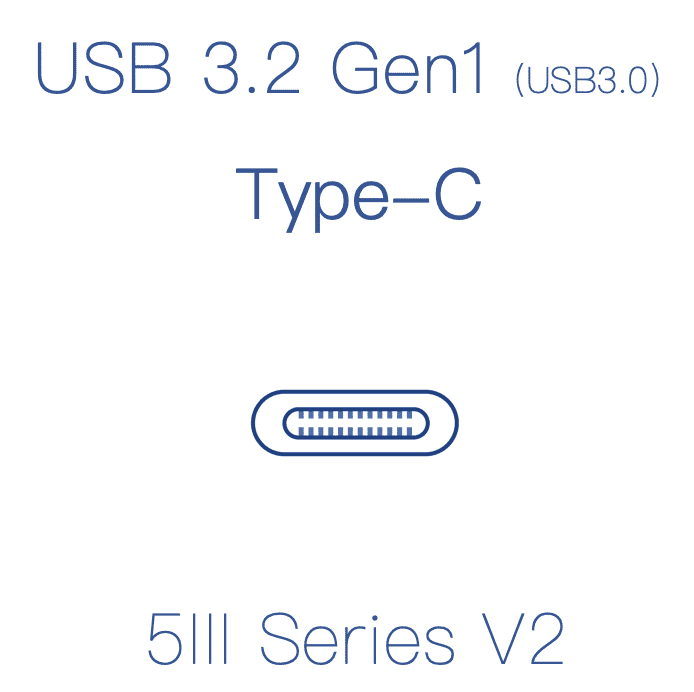 The new QHY5III (Ver.2) series cameras all use the USB3.2 Gen1 Type-C interface. Compared to the USB3.0 Type-B interface used in the previous generation, the Type-C interface has a longer life and is more flexible.
The new QHY5III (Ver.2) series cameras all use the USB3.2 Gen1 Type-C interface. Compared to the USB3.0 Type-B interface used in the previous generation, the Type-C interface has a longer life and is more flexible.
Tips: It is recommended to use the official standard Type-C data cable of QHYCCD. As the market is flooded with a large number of poor-quality Type-C cables, casual use may lead to the camera malfunctioning. If you use your own spare cable, please make sure it is a high-quality cable.
The custom interfaces of the previous generation of planetary cameras and guiders has been replaced in the QHY5III (Ver.2) cameras with a more universal ST-4 compatible guiding interface. Now, even if the guiding cable is lost or damaged, you will be able to easily get a replacement on the market at a low cost.
 The new QHY5III (Ver.2) series of cameras is equipped with a status indicator at the back of the camera. If the camera experiences an abnormal status, the multi-colored indicator light will help to determine the situation with different colors signifying different conditions. During normal operation this indicator light is off, so there is no worry about light contaminating the image.
The new QHY5III (Ver.2) series of cameras is equipped with a status indicator at the back of the camera. If the camera experiences an abnormal status, the multi-colored indicator light will help to determine the situation with different colors signifying different conditions. During normal operation this indicator light is off, so there is no worry about light contaminating the image.
| Model | QHY5III585C |
| CMOS Sensor | Sony IMX585 BSI Sensor |
| Pixel Size | 2.9um*2.9um |
| Effective Pixel Area | 3856*2180 |
| Effective Pixels | 8.4 Mega Pixel |
| Sensor Size | 1/1.2inch |
| Fullwell Capacity | 32ke- |
| Readout Noise | 0.8-5.5e- |
| AD Sample Depth | 12-bit (output as 16-bit and 8-bit) |
| Built-in Image Buffer | 512MB DDR3 Memory |
| ROI Frame Rate | Full Resolution 41.5FPS @8BIT 23.5FPS @16BIT
1080Lines 82FPS @8BIT 47FPS @16BIT 640Lines 135FPS @8BIT 79FPS @16BIT |
| Exposure Time Range | 11us-900sec |
| Shutter Type | Electronic Rolling Shutter |
| Computer Interface | USB3.2 Gen1 Type-C |
| Guide Port | st4 |
| Telescope Interface | 1.25-inch, compatible with CS interface or C interface by changing the front-end connector
(An IR-Cut filter and an IR850nm filter are included in the standard version) |
| Back Focal Length | 17mm (with adapter); 8±0.5mm(without adapter) |
| Weight | 90g |
Share

